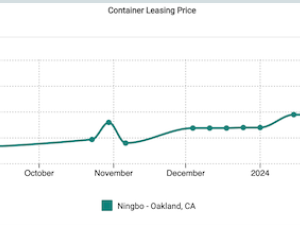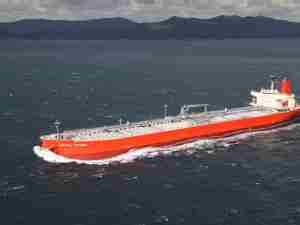A trade impact study issued by the ports of Long Beach and Los Angeles and Alameda Corridor Transportation Authority (ACTA) underscores the role of nation's two largest container ports play as critical economic powerhouses and job generators for both the state and national economies.
The San Pedro Bay ports handle more than 40% of the nation's total containerized cargo import traffic and 24% of the nation's total exports. Since 1994, when this trade impact study was first conducted, the growth in the national impact of trade for goods being transported at the San Pedro Bay ports increased 246%, from $74 billion to $256 billion, with $62.5 billion of that trade in California.
The number of direct and indirect jobs associated with the trade activity generated by the San Pedro Bay ports increased by 200%, from 1.1 million jobs nationally in 1994 to 3.3 million jobs in 2005. In addition, the study conservatively estimates that more than 886,000 jobs in California are directly and indirectly related to international trade activities conducted through the San Pedro Bay Ports.
'The study re-affirms the national significance of the San Pedro Ports. These two ports lead the way not only in cargo volumes but in implementing forward-thinking environmental mitigation strategies that recognize the severe health impacts on our communities of such monumental commerce,' said Long Beach Mayor Bob Foster. The study also assessed the economic impact of the San Pedro Bay ports in terms of state and local tax revenues and full-time jobs created. State and local taxes generated throughout the nation from this trade activity grew from an estimated $6 billion in 1994 to more than $28 billion in 2005.
Southern California has become the primary gateway for trade between the US and the Pacific Rim. The centrally located San Pedro Bay Ports have seen dramatic increases in trade volumes since the last study conducted in 2000. This tremendous growth in trade volume is due to the increase in consumer demand in the region and nationally. A majority of the distribution centers that rely solely on the ports to transport toys, clothing, shoes, computers, TVs, furniture and many other goods across the nation are located in the region.
'The report shows very clearly that the ports of Long Beach and Los Angeles are America's ports, supporting trade and jobs not only in California but as far away as Kansas, Michigan, Texas, and many other states throughout the country,' said Long Beach Harbor Commission President James C. Hankla. 'These findings demonstrate why we need state and national support for our critical infrastructure, security and environmental improvements.'
The Southwest Region, which in the study encompasses California, Arizona, Colorado, Nevada and Utah, saw the highest volume of containerized trade in the US, handling more than $82 billion of the $256 billion of the trade generated nationally in 2005.
"This report underscores just how vital port operations are to the local, regional and national economies,' said Port of Long Beach Executive Director Richard Steinke. 'Through strong partnerships with our many stakeholders, we can ensure that our economic vitality continues here and across the country, while also improving the environment and the quality of life in our communities."
The Port of Long Beach, a non-taxpayer supported department of the City of Long Beach, and the Port of Los Angeles, a non-taxpayer-supported department of the City of Los Angeles, are the top two container seaports in America. Together, the ports occupy about 7,400 acres of land, 7,900 acres of water and 78 miles of waterfront in Southern California. With about 60 (combined) terminals serving container, automobile, break bulk, liquid bulk and dry bulk customers, the ports facilitate the flow of goods that sustain the entire nation. In addition to leading the nation in international cargo trade, the San Pe









